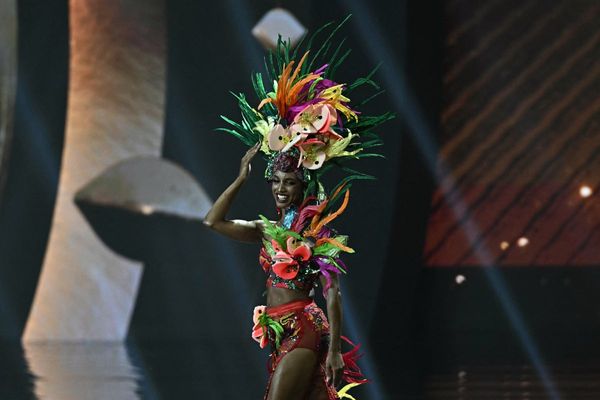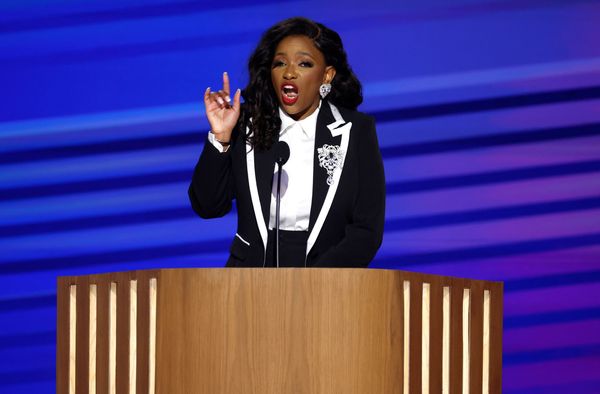
“The visitors had played some shots unworthy of a Test side. In the tabloid versions, England’s performance was ‘shocking … inexcusable, almost beyond belief’ and ‘miserable … appalling … pathetic … awful.” Not a summary of England’s recent Ashes disaster, nor even a throwback to the not-so-nicey-90s: for this particular instance of English collapsibility you have to cast back to 1953-54 when an all-star MCC team was facing West Indies in what was supposed to be cricket’s unofficial world championship. It turned into a series as controversial and downright unpleasant as cricket has seen. Some who played in it – including Tom Graveney and Clyde Walcott – have argued it was more acrimonious than Bodyline.
Curious, then, that so little has ever been written about it. Its legend was passed down by the increasingly unreliable memories of its leading players – by the club-circuit anecdotes of Fred Trueman or the scrupulously diplomatic memoirs of Sir Everton Weekes. It deserves to be more widely known and far better understood – not least because some of its most discordant notes still resonate in our current sporting and political climates. Today, players taking the knee before a game can cause conniptions; in 1954, a Guyanese cinema audience refusing to stand for the national anthem would have had the same effect.
David Woodhouse, who has just published an authoritative history of the tour, became hooked by the story from reading Len Hutton’s autobiography. “It was a typically dry telling, but something happened at every turn,” he says. Hutton got the tour off to a bad start when he announced there would be no fraternising with the opposition – after their pioneering series victory of 1950, the West Indies players considered this a mortal insult – “and ill will just built up from there. Charles Palmer, MCC’s player-manager, told me that there was an arrow coming every five minutes. He never knew where it was coming from, but he knew it was coming.”

On the field there were bouncer wars, bowlers no-balled for chucking and batting collapses as thick and slick as mudslides. There was such animus towards the umpires (on the part of players and locals) that one was physically attacked, and two were summarily replaced – in one case, by the groundsman. Off the field, MCC’s players were accused of bad language and poor behaviour and chafed under their captain’s restrictive policies; while the West Indies’ selection policies set island against island and turned their own captain, Jeff Stollmeyer, into such a hate figure that at one point he requested a helicopter stand by to get him safely away from the ground.
While the English-centric record of events has always concentrated primarily on the “who said what to whom” and who was most to blame, Woodhouse aims for a far more balanced and expansive view, foregrounding Caribbean voices and revisiting complex and even contradictory characters, like Stollmeyer. Seven years of research and writing allowed him to place the full gamut of detail within a rich social, racial and political history.
“When you read in Wisden about the crowd rioting at the third Test in Guyana you wouldn’t know that the constitution had been suspended, that’s never alluded to,” says Woodhouse. Nor that on the first day of the Test Guyana’s elected nationalist leader, Cheddi Jagan, had returned home for the first time since British troops had removed him from office.
As for the cricket, while it wasn’t pretty, the five-Test series was fought to the last gasp even after England went two-nil down. Within the canon of West Indies cricket, it has become something of a lost tour, says Santokie Nagulendran, host of the Caribbean Cricket Podcast. “There are two reasons why it’s not remembered vividly,” he says. “First, West Indies blew a 2-0 lead, which led to a decline in results after the euphoria of 1950.

“But there’s also the issue that communication between the islands was so sparse that providing an overall narrative of tours that took place across numerous locations was difficult back then. And West Indies cricketing history is often fragmented into different viewpoints depending on what island or nation or race the storyteller is from.”
Nagulendran is impressed with Woodhouse’s effort, particularly the number of sources he has drawn from.
For Vaneisa Baksh, the Trinidadian cricket writer currently working on a biography of Frank Worrell, the book brings a welcome opportunity for a more “nuanced understanding” of what went on on the tour. “In the section where he details each day’s play, I found myself hanging on to the events as if I were a live spectator,” she says, laughing.
She hopes to see more retelling of Caribbean cricketing narratives like this. “In the past histories have often been excavated by only one kind of shovel,” says Baksh. “Even when West Indians attempted to tell their stories, they did it through mainly English ghost writers and I have seen some narratives that used language and observations that seemed alien to the people supposedly expressing them.” Baksh and Nagulendran extol the multi-volume history From Ranji to Rohan in which Prof Clem Seecharan chronicles the game in Guyana. The work of Hilary Beckles should also be on the reading list of anyone searching for a decentred view of Caribbean cricket.
Woodhouse admits he feels very conscious of the observation of Gordon Lewis, the great neo-Marxist historian, that it has been “part of the colonial burden” for West Indians to read about themselves in books written by outsiders. As he points out, one of the messages of the 1953-54 tour is that we all have a bias. “Sometimes we don’t see it,” he says, “and sometimes it’s one we’re very proud of.”
• This is an extract from the Guardian’s weekly cricket email, The Spin. To subscribe and get the full edition, visit this page and follow the instructions.







